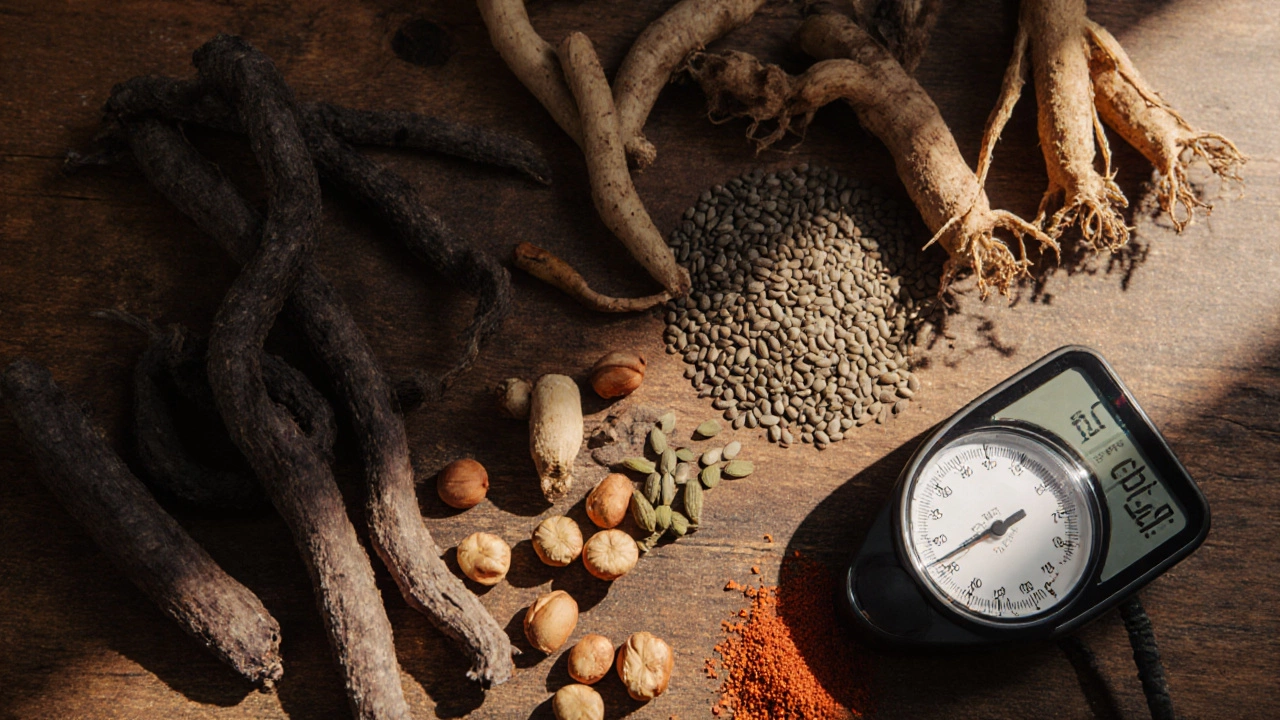High Blood Pressure Herbs: Natural Ways to Lower Hypertension
When working with high blood pressure herbs, plant‑based remedies that help lower blood pressure naturally. Also known as herbal hypertension remedies, they combine traditional knowledge with modern research to support a healthier cardiovascular system.
Understanding herbs, botanical ingredients used for medicinal purposes is the first step. Herbs like garlic, hibiscus, and hawthorn contain compounds that relax blood vessels, improve circulation, and reduce sodium retention. The science shows that regular intake of these plants can modestly lower systolic and diastolic numbers, especially when paired with a low‑salt diet. This makes herbs a practical addition for anyone looking to manage blood pressure without relying solely on pharmaceuticals.
Ayurveda, India’s ancient system of holistic health offers a structured approach to choosing the right herbs. It classifies individuals by dosha (Vata, Pitta, Kapha) and recommends specific plants—such as basil (Tulsi) for Pitta or cinnamon for Kapha—to balance the body’s internal fire and fluid dynamics. By aligning herb selection with your dosha, Ayurveda aims to target the root causes of hypertension, not just the symptoms.
At the core of the discussion is hypertension, a chronic condition characterized by elevated arterial pressure. Uncontrolled blood pressure strains the heart, kidneys, and brain, raising the risk of heart attack and stroke. While medication remains essential for many, lifestyle tweaks—like adding high blood pressure herbs—can enhance treatment outcomes and sometimes reduce the needed dosage of prescription drugs.
Safety matters as much as effectiveness. Herbal supplements must be sourced from reputable companies that test for purity and potency. Look for third‑party certifications and avoid products with hidden stimulants. Dosage guidelines vary: a cup of hibiscus tea daily, a garlic capsule delivering 600 mg allicin, or a hawthorn extract taken twice a day are common protocols. Always discuss integration with your doctor, especially if you’re on blood‑thinning medication, because some herbs (e.g., garlic) can amplify anticoagulant effects.
Herbs work best when they’re part of a broader lifestyle plan. Regular aerobic exercise, stress‑reduction techniques like deep breathing, and a diet rich in fruits, vegetables, and whole grains complement the blood‑pressure‑lowering properties of herbs. For instance, pairing a cinnamon‑spiced oatmeal breakfast with a daily garlic supplement can help control post‑meal glucose spikes, which indirectly supports vascular health.
What You’ll Find Below
The articles listed after this introduction dive deep into related topics. You’ll read about the best herbal companies that guarantee quality, learn which herbs support liver health—a key player in metabolizing blood‑pressure meds—and explore Ayurvedic diet tips that avoid foods that can raise blood pressure. There are also practical guides on supplement safety, how herbal remedies interact with conventional drugs, and lifestyle hacks that amplify the benefits of high blood pressure herbs.
Ready to see how specific herbs can fit into your daily routine and which evidence‑backed strategies doctors recommend? Scroll down to explore the curated collection of articles that break down each herb, dosage, and safety tip in plain language, so you can start taking control of your blood pressure today.






